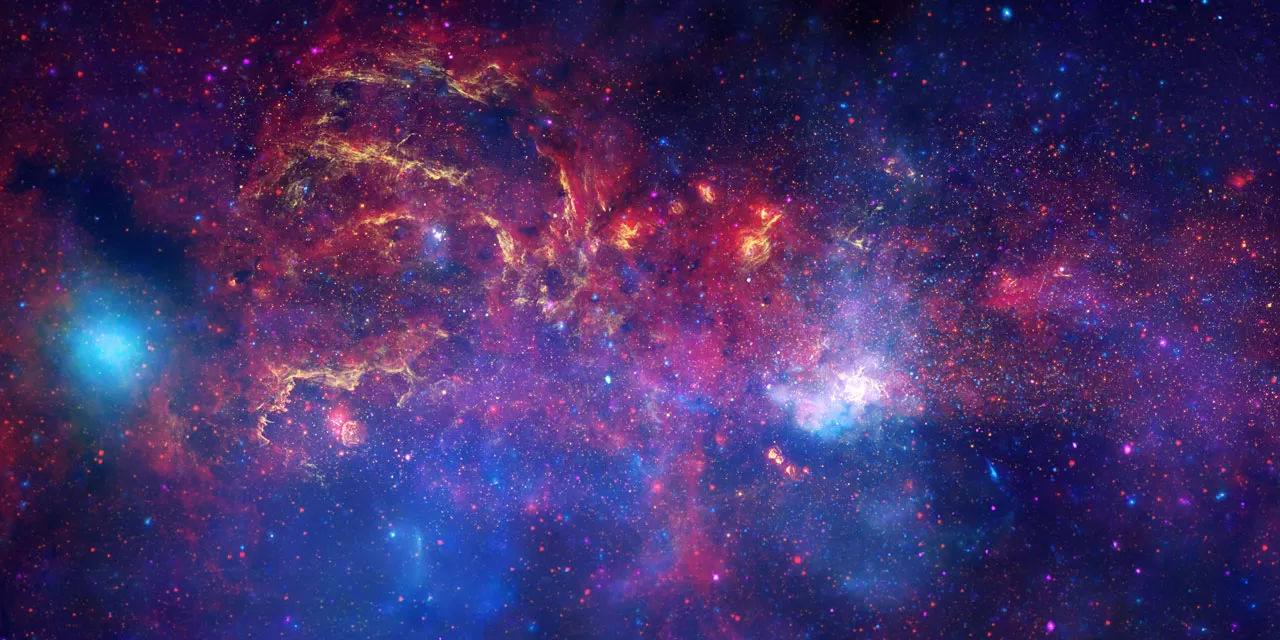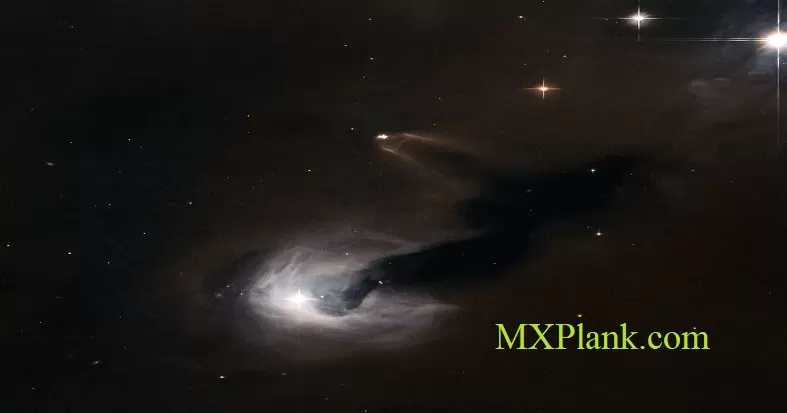Nearest extrasolar planet to our Solar System

This is the image of a Jupiter-mass planet orbiting the nearby star Epsilon Eridani. Located 10.5 light-years away, it is the closest known extrasolar planet to our solar system. The planet is in an elliptical orbit that carries it as close to the star as Earth is from the Sun, and as far from the star as Jupiter is from the Sun.
Epsilon Eridani is a young star, only 800 million years old. It is still surrounded by a disk of dust that extends 30 billion kilometres from the star. The disk appears as a linear sheet of reflecting dust in this view because it is seen edge-on from the planet's orbit, which is in the same plane as the dust disk.
The planet's rings and satellites are purely hypothetical in this view, but plausible. As a gas giant, the planet is uninhabitable for life as we know it. However, any moons might have conditions suitable for life.
Astronomers determined the planet's mass and orbital tilt in 2006 by using Hubble to measure the unseen planet's gravitational pull on the star as it slowly moved across the sky. Evidence for the planet first appeared in 2000 when astronomers measured a telltale wobble in the star.
Epsilon Eridani formally named Ran, is a star in the southern constellation of Eridanus, at a declination of 9.46° south of the celestial equator. This allows it to be visible from most of Earth's surface. At a distance of 10.5 light-years (3.2 parsecs) from the Sun, it has an apparent magnitude of 3.73. It is the third-closest individual star or star system visible to the unaided eye.
The star is estimated to be less than a billion years old. Because of its relative youth, Epsilon Eridani has a higher level of magnetic activity than the present-day Sun, with a stellar wind 30 times as strong. Its rotation period is 11.2 days at the equator. Epsilon Eridani is smaller and less massive than the Sun, and has a comparatively lower level of elements heavier than helium. It is a main-sequence star of spectral class K2, which means that energy generated at the core through nuclear fusion of hydrogen is emitted from the surface at a temperature of about 5,000 K (8,500 °F), giving it an orange hue.
The Bayer designation e Eridani (Latinised as Epsilon Eridani) was established in 1603 by Johann Bayer. It may be a member of the Ursa Major Moving Group of stars that share a similar motion through the Milky Way, implying these stars shared a common origin in an open cluster. Its nearest neighbour, the binary star system Luyten 726-8, will have a close encounter with Epsilon Eridani in approximately 31,500 years when they will be separated by about 0.93 ly (0.29 pc).
The motion of Epsilon Eridani along the line of sight to Earth, known as the radial velocity, has been regularly observed for more than twenty years. Periodic changes in its value yielded evidence of a giant planet orbiting the star, making it one of the closest star systems with a candidate exoplanet. The discovery of the planet has been controversial because of the amount of background noise in the radial velocity data, particularly in the early observation, but many astronomers now regard the planet as confirmed. In 2016 it was given the alternative name AEgir [sic].
The Epsilon Eridani system also includes two belts of rocky asteroids: at about 3 AU and 20 AU from the star. The orbital structure could be maintained by a hypothetical second planet, which if confirmed would be Epsilon Eridani c. Epsilon Eridani hosts an extensive outer debris disk of remnant planetesimals left over from the system's formation.
As one of the nearest Sun-like stars with a planet, Epsilon Eridani has been the target of several observations in the search for extraterrestrial intelligence. Epsilon Eridani appears in science fiction stories and has been suggested as a destination for interstellar travel. From Epsilon Eridani, the Sun would appear as a 2.4-magnitude star in Serpens.
Epsilon Eridani is a young star, only 800 million years old. It is still surrounded by a disk of dust that extends 30 billion kilometres from the star. The disk appears as a linear sheet of reflecting dust in this view because it is seen edge-on from the planet's orbit, which is in the same plane as the dust disk.
The planet's rings and satellites are purely hypothetical in this view, but plausible. As a gas giant, the planet is uninhabitable for life as we know it. However, any moons might have conditions suitable for life.
Astronomers determined the planet's mass and orbital tilt in 2006 by using Hubble to measure the unseen planet's gravitational pull on the star as it slowly moved across the sky. Evidence for the planet first appeared in 2000 when astronomers measured a telltale wobble in the star.
Epsilon Eridani formally named Ran, is a star in the southern constellation of Eridanus, at a declination of 9.46° south of the celestial equator. This allows it to be visible from most of Earth's surface. At a distance of 10.5 light-years (3.2 parsecs) from the Sun, it has an apparent magnitude of 3.73. It is the third-closest individual star or star system visible to the unaided eye.
The star is estimated to be less than a billion years old. Because of its relative youth, Epsilon Eridani has a higher level of magnetic activity than the present-day Sun, with a stellar wind 30 times as strong. Its rotation period is 11.2 days at the equator. Epsilon Eridani is smaller and less massive than the Sun, and has a comparatively lower level of elements heavier than helium. It is a main-sequence star of spectral class K2, which means that energy generated at the core through nuclear fusion of hydrogen is emitted from the surface at a temperature of about 5,000 K (8,500 °F), giving it an orange hue.
The Bayer designation e Eridani (Latinised as Epsilon Eridani) was established in 1603 by Johann Bayer. It may be a member of the Ursa Major Moving Group of stars that share a similar motion through the Milky Way, implying these stars shared a common origin in an open cluster. Its nearest neighbour, the binary star system Luyten 726-8, will have a close encounter with Epsilon Eridani in approximately 31,500 years when they will be separated by about 0.93 ly (0.29 pc).
The motion of Epsilon Eridani along the line of sight to Earth, known as the radial velocity, has been regularly observed for more than twenty years. Periodic changes in its value yielded evidence of a giant planet orbiting the star, making it one of the closest star systems with a candidate exoplanet. The discovery of the planet has been controversial because of the amount of background noise in the radial velocity data, particularly in the early observation, but many astronomers now regard the planet as confirmed. In 2016 it was given the alternative name AEgir [sic].
The Epsilon Eridani system also includes two belts of rocky asteroids: at about 3 AU and 20 AU from the star. The orbital structure could be maintained by a hypothetical second planet, which if confirmed would be Epsilon Eridani c. Epsilon Eridani hosts an extensive outer debris disk of remnant planetesimals left over from the system's formation.
As one of the nearest Sun-like stars with a planet, Epsilon Eridani has been the target of several observations in the search for extraterrestrial intelligence. Epsilon Eridani appears in science fiction stories and has been suggested as a destination for interstellar travel. From Epsilon Eridani, the Sun would appear as a 2.4-magnitude star in Serpens.
Credit:
NASA, ESA, and G. Bacon (STScI)






